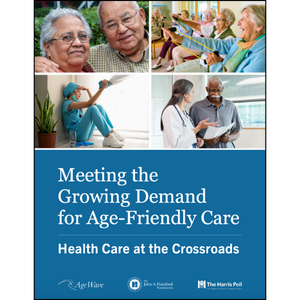Are you ready for MDS 3.0?
At a glance…
Providers with effective and dynamic leadership in an atmosphere of resident-directed care are likely to be the ones to experience a smooth, successful transition to MDS 3.0.
Nursing homes are on the MDS 3.0 and RUG-IV home stretch. October 1 is the day both the new assessment instrument and the revised Medicare Part A payment system are slated to take effect. Provider preparations should be in full swing by now, but it’s not too late to start-or to evaluate progress and make any necessary changes in time for successful and meaningful implementation.
The new version of the MDS has the potential to be the catalyst for significant change in the culture of many nursing homes to improve the care and the quality of life of their residents. Assessment is a key area of improvement in the MDS 3.0. The standardized screening scales, evidence-based assessments, and improved tools for more in-depth assessment of triggered care areas offer the potential to elevate the quality of care in every facility.
Just as importantly, the scripted interviews integral to the MDS 3.0, which scored high in reliability and validity, elicit each resident’s own assessment of his or her cognition, mood, daily activity preferences, and pain. Such high-quality assessment yields information about a resident that is so specific to the individual that a plan of care specifically targeted to the resident’s issues flows naturally from the information collected.
But for many facilities, unless the culture of assessment is significantly improved, the potential of the MDS 3.0 will not be realized. DONs, through their roles as leaders and educators, can make this happen.
Brand new
It starts with approaching the MDS 3.0 as a brand-new assessment instrument rather than as the MDS 2.0 with some changes. The new version is so different from the 2.0 that everyone involved should start from scratch to learn about it. This is the opening to put a new spotlight on it and incorporate it into the life of the facility rather than treating it as something that exists separate from the mainstream of the facility. This is about culture change and about communicating that this is not just regulatory compliance-this is an opportunity to improve care and quality of life.
New systems will be needed to support the MDS 3.0 to ensure that information is collected as required by the regulation, that residents are brought into the center of the process, and that the assessments are coded by the book (“the book” being the 3.0 version of the RAI User’s Manual). A critical first step is to make a plan for implementation well in advance of the start date. It’s just critical to success that the entire team be involved-and that each member of the team understands what his or her contribution will be.
The administrative team in the community should not just turn this over to someone and move on to other business. As leaders, administrative team members can be the facilitators throughout the process-facilitating an interactive process, smoothing the way for good communication, removing barriers to the team’s success. And probably most importantly, the team must know that this project has the full support and priority of the facility’s administrative team. In the end, team members are much more likely to give priority to something that they know their boss gives high priority to.
Formal training
Hopefully, facilities set aside funds in the current budget for MDS 3.0 implementation. This is the time to allot some of that money to provide formal training by recognized experts for all staff members who will participate in the assessment.
It really is not sufficient to hand a nurse the instruction manual and say, “Here it is, go for it.” As a leader and as a manager, it is very important to understand and support the importance of each member of the team receiving the training they will need to do the job right.
Another good use of the implementation funds is providing for staff practice time. Since the MDS 2.0 essentially will retire on September 30 and the 3.0 starts the next day, staff members must develop a reasonable level of proficiency prior to October 1. In consultation with the facility’s software vendor, the practice time should include working with the software, completing test MDS 3.0 assessments, and starting to get comfortable with the software.
Ample training and staff practice time also should be allotted for developing comfort and proficiency with the scripted interviews. Everyone involved in the interview process should watch the “Video on Interviewing Vulnerable Elders” for instruction about the rationale, methods, and techniques that foster successful interviews. The video will be available from the Centers for Medicare & Medicaid Services’ Web site (www.cms.gov) and is available for download from the American Association of Nurse Assessment Coordinators (www.aanac.org) homepage. It may be ordered in DVD format from the Pioneer Network. Also, Appendix E and the instructions for each interview item in Chapter 3 of the RAI User’s Manual provide very valuable information to assist with this skill. Facility staff should start using these interviews now. While the results of these interviews with residents cannot be used for coding the MDS 2.0, they can be used to develop proficiency, while enhancing existing assessment processes and improving care planning and quality of life in these areas sooner rather than later.
Reimbursement
Given the difficulty in providing high-quality care without adequate reimbursement, in addition to preparing for implementation of the MDS 3.0 and related processes, studying the impact of the MDS 3.0 and RUG-IV, the updated Medicare Part A payment system, is critical as well.
Indications are that changes, including redistribution of various skilled nursing services and changes in some of the MDS assessment requirements, changes to concurrent therapy, drastically limiting the look-back into the preadmission period, and curtailing the use of therapy aides’ minutes, may have significant impact for some providers.
At the same time, it will be important for the facility to identify missed reimbursement opportunities and potential new revenue streams. For example, for many providers, Part A has become so familiar over the years that it’s been a long time since a systematic reevaluation of utilization has been done. Same thing with Part B-maybe the focus on Part A has resulted in less concern with ensuring that residents get the Part B services they may qualify for.
It really is not sufficient to hand a nurse the instruction manual and say, “Here it is, go for it.”
Starts at the top
Change usually does not come easily. It is difficult under the best of circumstances and resistance is inevitable, but how change is supported and implemented from the very top and throughout the organization can make a huge difference in the outcomes of the change effort. Any change in culture requires more than training of the involved staff on the nuts and bolts of completion of the form and requires the commitment and attention from the entire organization, starting at the top.
Successful implementation will take time and vision, patience, and leadership. Providers with effective and dynamic leadership in an atmosphere of resident-directed care are likely to be the ones to experience a smooth, successful transition. The investment of passion for the residents, commitment to interdisciplinary team members, and clear articulation of vision and expectations from a dedicated leader will help pave the way for full and successful implementation of the MDS 3.0.
About AANAC
The American Association of Nurse Assessment Coordinators (AANAC) is a nonprofit professional association representing nurse executives working in the long-term care industry. AANAC is operated by nurses for nurses and is dedicated to providing members with the resources, tools, and support they need in their specialized role of leaders and managers in long-term care. To join or get more information, visit www.aanac.org or call (800) 768-1880.
Rena R. Shephard, MHA, RN, RAC-MT, C-NE, is Executive Editor of the American Association of Nurse Assessment Coordinators (AANAC). She can be reached at (858)592-6799, or for more information, visit
www.aanac.org. Long-Term Living 2010 August;59(8):47-48
I Advance Senior Care is the industry-leading source for practical, in-depth, business-building, and resident care information for owners, executives, administrators, and directors of nursing at assisted living communities, skilled nursing facilities, post-acute facilities, and continuing care retirement communities. The I Advance Senior Care editorial team and industry experts provide market analysis, strategic direction, policy commentary, clinical best-practices, business management, and technology breakthroughs.
I Advance Senior Care is part of the Institute for the Advancement of Senior Care and published by Plain-English Health Care.
Related Articles
Topics: Articles , Leadership , MDS/RAI , Medicare/Medicaid











